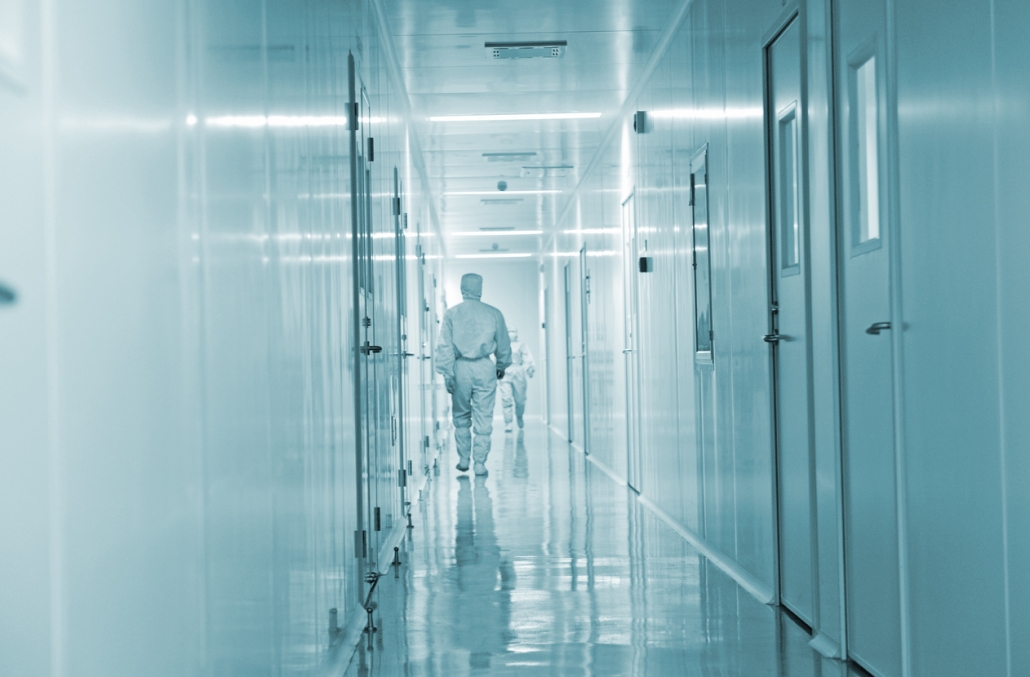Did you know that one of the most famous cleanrooms is at NASA’s Goddard Space Flight Center in Greenbelt, Maryland? It contains the world’s largest ISO 7 cleanroom, known as The High Bay Cleanroom, with 1.3 million cubic feet of space.
With cleanrooms standing as one of the pillars on which biopharma innovation is built, we’re excited about the many advancements being made in cleanroom technologies. Read on to learn more about the cleanroom market and the latest tech.
Current Cleanroom Market
According to Mordor Intelligence, in 2020, the cleanroom technology market was valued at $6.454 billion with the expectation of the market reaching $8.87 billion by 2026.
And to no one’s surprise, the COVID-19 pandemic surged interest in clean environments to help meet market demand for vaccines and other therapeutics.
It’s also expected that the biopharma industry will lead the cleanroom market for years to come.
Pharma Manufacturing notes that there are several trends that are driving the current growth of the cleanroom market that work in tandem with the pandemic:
- Pre-fabrication or POD type of equipment to address shortage of skilled labor and related high costs
- More regulatory standards
- Increased adoption of modular cleanrooms
- Growing demand for cell and gene therapies
- Need for reliable delivery times and cost budgets
- Increase in new biopharma hubs
- Decrease in cost of modular cleanrooms
Let’s take a closer look at some of the technological innovations in cleanroom design.
The Future of Cleanroom Technology
According to Contract Pharma, the cleanroom of the future is “holistic.” They expect cleanroom technology to shift to meet unique product demands, and as with most other areas in biopharma, maintaining flexibility and enhancing quality are crucial.
Companies should plan to take advantage of innovative production methods to enhance their current manufacturing processes. The “cleanroom of the future” should take every opportunity to be flexible and improve speed to market. Consider these areas for increased efficiency.
1. Adopting New Approaches
For instance, when it comes to high-quality aseptic drug processing, cleanrooms typically have two approaches: isolators and RABs.
However, to meet growing demands and stricter regulatory requirements, companies should be prepared to respond with newer approaches, such as the Vetter Cleanroom Technology (V-CRT). V-CRT combines the best of isolators and RABS systems, optimizing for versatility and efficiency while focusing on rapid changeover.
Related: Best Practices for Aseptic Fill-Finish Manufacturing
2. Taking Advantage of Modular Designs
Adopting a modular facility design to enhance flexibility and longevity of your space is a key component to staying adaptable. Cleanrooms are no exception, as seen by the rise in modular and pre-fab rooms. By having a flexible approach that can accommodate your facility’s future needs, you can speed up cleaning time, reduce contamination risk, and get your products to market faster.
3. Staying Nimble
As with any technological advancement, keeping an open mindset toward innovation is an important consideration. New technologies and processes are what keep your business moving forward and prepared for the future. Don’t miss out on new opportunities by ignoring market trends.
Regardless of where your current cleanroom stands, ICQ can help meet all your CQV needs.




